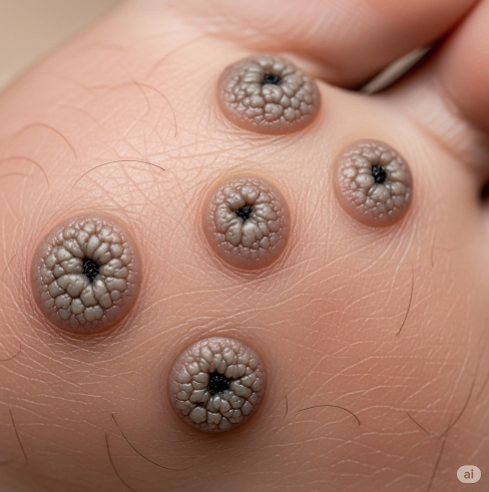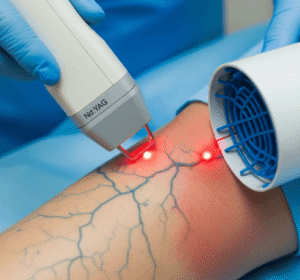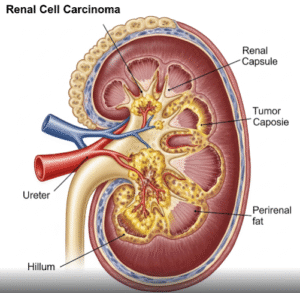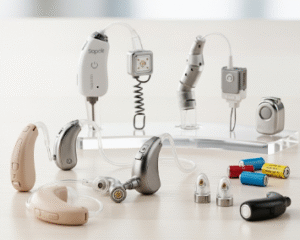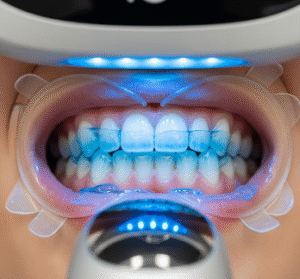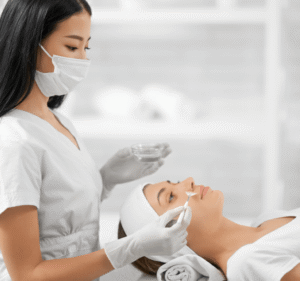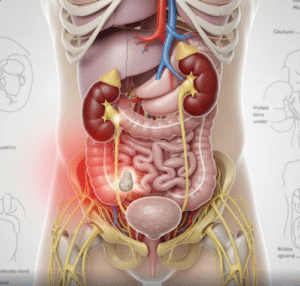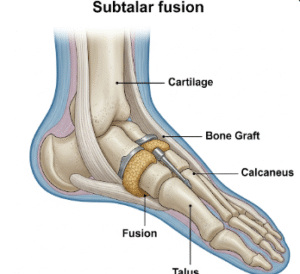Overview
Plantar warts are non-cancerous skin growths that appear on the soles (plantar surface) of the feet, caused by infection with the human papillomavirus (HPV). These warts are often hard, flat, and painful due to pressure from walking or standing. While generally harmless, they can cause discomfort and spread if left untreated. Plantar warts are common among children, teenagers, and people who frequently walk barefoot in public spaces.
What is Plantar Wart?
A plantar wart is a small, rough lesion that develops when HPV enters the skin through small cuts or abrasions, typically on the bottom of the foot. Because of the pressure exerted when walking, plantar warts often grow inward beneath a thick layer of skin (callus). They may appear singly or in clusters (known as mosaic warts).
Unlike other types of warts, plantar warts are often painful, especially when located on weight-bearing areas like the heel or ball of the foot.
Symptoms
Plantar warts can be identified by their appearance and location. Common symptoms include:
- A small, fleshy, rough, or grainy growth on the bottom of the foot
- A hard, thickened area of skin over the wart (callus)
- Black pinpoints (clotted blood vessels) in the center of the lesion
- Pain or tenderness when walking or standing
- Warts that interrupt the normal skin lines on the foot
- In mosaic warts, multiple smaller lesions clustered together
Causes
Plantar warts are caused by infection with certain strains of HPV, particularly types 1, 2, 4, and 63. The virus infects the skin through microscopic breaks, and the following factors contribute to transmission:
- Walking barefoot in communal areas (e.g., swimming pools, locker rooms, showers)
- Direct skin contact with contaminated surfaces
- Sharing shoes or socks with an infected person
- Weakened immune system (more prone to infection)
HPV is highly contagious but does not always cause warts in everyone exposed.
Risk Factors
Certain factors increase the likelihood of developing plantar warts:
- Age: More common in children and teens
- Use of communal showers or swimming pools
- Foot trauma: Small cuts, blisters, or cracked heels
- Weakened immune system (e.g., HIV/AIDS, immunosuppressive therapy)
- Skin conditions like eczema that disrupt the skin barrier
- Excessive sweating of the feet (hyperhidrosis)
Complications
While plantar warts are not dangerous, complications can occur if untreated:
- Painful walking or altered posture, potentially leading to joint/muscle problems
- Spread to other areas of the foot or body
- Transmission to others, especially within families or athletic teams
- Infection from picking or scratching the wart
- Persistent or recurrent warts even after treatment
Prevention
To reduce the risk of getting or spreading plantar warts, consider the following preventive measures:
- Wear shower shoes or sandals in public places
- Keep feet clean and dry
- Avoid sharing shoes, socks, or foot care tools
- Don’t walk barefoot in locker rooms, pools, or hotel rooms
- Disinfect surfaces at home if someone has a wart
- Do not pick at warts, and wash hands thoroughly if touched
- Strengthen your immune system through proper nutrition and sleep
- Use antiviral foot sprays or powders in high-risk environments
Treatment Options in Korea
South Korea offers a wide range of modern, effective treatment options for plantar warts, available through dermatology clinics, podiatry specialists, and general hospitals. Common treatments include:
1. Topical Treatments
- Salicylic acid preparations: Over-the-counter or prescription creams, gels, or pads that peel away infected skin
- Imiquimod cream: Boosts the body’s immune response to HPV (used for resistant warts)
2. Cryotherapy
- Liquid nitrogen freezing: Destroys the wart tissue through cold therapy
- Multiple sessions may be required
- One of the most common in-office procedures in Korea
3. Laser Therapy
- Pulsed dye laser or CO₂ laser used to target and destroy wart tissue and blood vessels
- Effective for stubborn or mosaic warts
- Available in advanced dermatology centers
4. Minor Surgery
- Curettage and excision under local anesthesia for painful or large warts
- May leave a scar and requires proper wound care
5. Immunotherapy
- Intralesional injections (e.g., candida antigen) to stimulate the immune system to fight the wart virus
- Used for recurrent or treatment-resistant cases
6. Oral Medication (rare)
- In specific cases, oral cimetidine or retinoids may be prescribed
7. Traditional Korean Medicine (Optional)
- Some clinics offer herbal topical preparations or acupuncture as adjunct therapies
- May help in boosting immune function and promoting skin healing
8. International Care Access
Hospitals such as Severance Dermatology Center, Samsung Medical Center, and Asan Medical Center provide:
- English-speaking dermatologists
- Advanced diagnostics and customized treatment plans
- Clean, sterile environments ideal for procedural treatments
- Integrated podiatry care for cases involving walking pain or foot deformities

